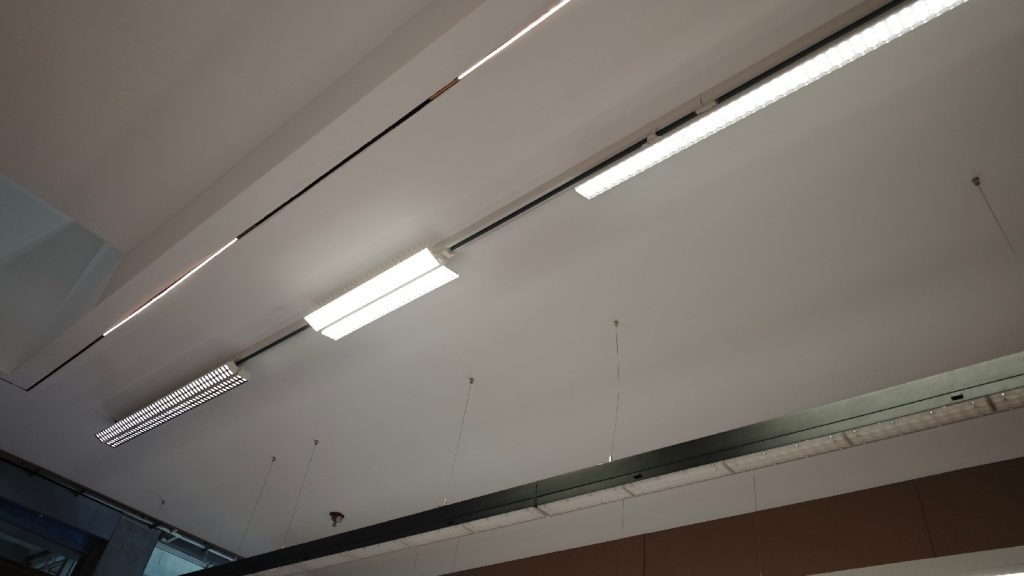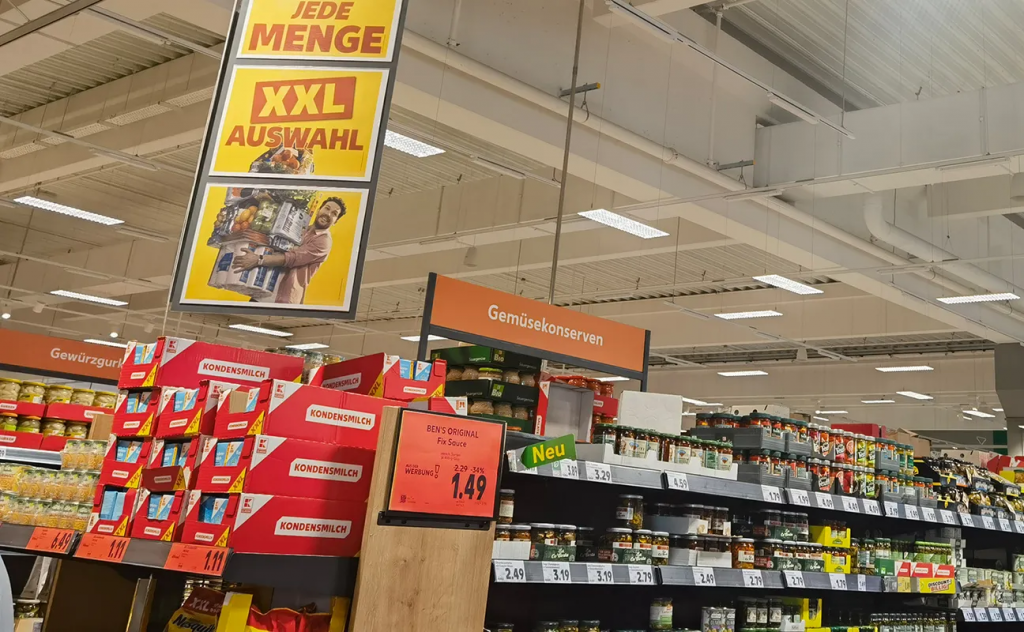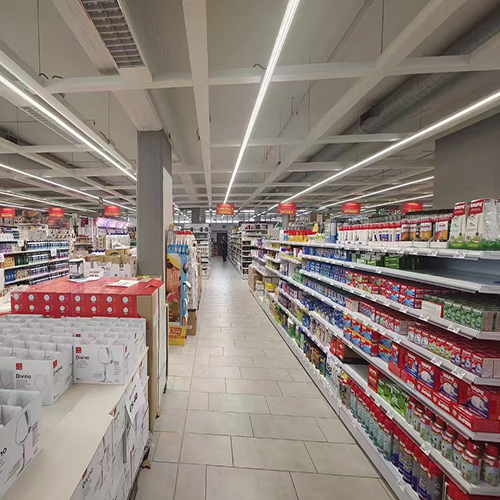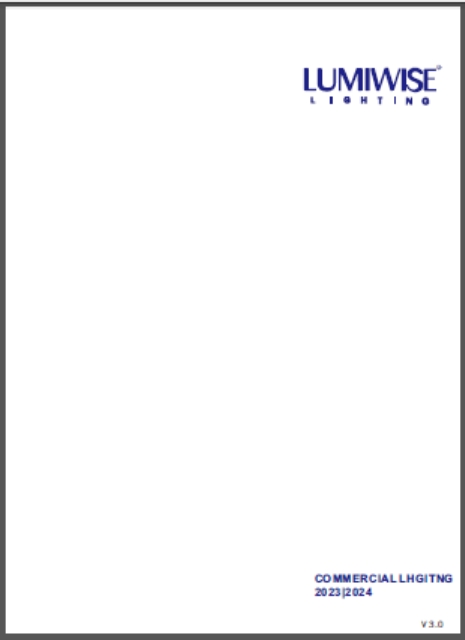Supermarket Lighting Guide |
Make Your Store “Shine” with Better Business!
In today’s retail environment, lighting is no longer just about “illuminating” spaces. It’s more than infrastructure—it’s an invisible force that enhances experiences, drives sales, shapes brand image, and a key tool to create shopping experiences and spark consumer desire. A scientific lighting system can make a supermarket “warmer” and products “more appealing.”
1. Different Formats, Different “Personalities” in Lighting
| Format Type | Key Lighting Needs |
| 🏬 Large comprehensive supermarkets | Spacious with complex zoning; needs to balance focal highlighting and overall integration |
| 🏘 Community convenience stores | Compact and delicate; emphasizes ambiance with well-matched fixtures |
| 🥦 Fresh food supermarkets | Color-sensitive; requires special color rendering and spectrum specifications |
| 🏗 Warehouse membership stores | High ceilings and deep shelves; demands high vertical illuminance and uniformity |
💡 Tip: The “lighting personality” of different zones should align with business needs. Zoned lighting design must integrate customer flow and operational strategies, so that light not only serves functions but also tells a story.
2. Fresh Food Area Lighting Design | Illuminate “Freshness”!
The fresh food area is critical for attracting customers and boosting conversions. T/CIES 035-2024 Specifications for Color Rendering of Lighting Sources for Fresh Edible Agricultural Products outlines requirements for color rendering, color temperature, and illuminance—strict adherence is recommended.
✅ Core Technical Indicators
| Indicator Name | Required Value |
| Color Rendering Index (Ra) | ≥90 |
| Special Color Rendering Index (R9) | ≥50 |
| Color Fidelity Index (Rf) | ≥85 |
| Gamut Index (Rg) | 80–110 |
| Color Deviation (Duv) | -0.03 ~ +0.03 |
| Recommended Illuminance Range | 500–1500lx |
✅ Zoned Lighting Recommendations
| Area | Recommended Illuminance | Recommended Color Temperature (K) | Color Rendering Requirement | Duv Range | Spectrum Optimization Direction |
| 🥩 Meat Section | 1000lx | 3500–4300 | Ra ≥ 90, R9 ≥ 50 | -0.015 ~ +0.015 | Enhance redness; avoid blue-purple tint |
| 🍊 Fruits & Veggies Section | 750–1000lx | 3700–4200 | Ra ≥ 90 | -0.015 ~ +0.015 | Boost green/orange tones; enhance vividness |
| 🐟 Seafood Section | 750–1000lx | 5700–6500 | Ra ≥ 90 | -0.015 ~ +0.015 | Cool neutral light; highlight freshness |
| 🍞 Cooked Food Section | 500–750lx | 2700–3000 | Ra ≥ 80 | -0.02 ~ +0.02 | Warm tones; enhance golden, appetizing appeal |
| 🫘 Bulk Dry Goods Section | 500–750lx | 3000–3500 | Ra ≥ 80 | -0.02 ~ +0.02 | Soft light to restore texture; control tinting |
🔍 Details to Note:
- For seafood areas, fixtures should have an IP rating ≥ IP44 (moisture and fog resistance).
- Narrow beam angles are recommended to reduce interference.
- Specialized fresh food spectra better enhance color and sales appeal.
3. Shelf Area Lighting Design | Make Products “Stand Out”!
Shelf areas are key sales zones—lighting must balance layers, focus, and comfort.

🧾 Lighting Strategies & Fixture Recommendations
| Shelf Type | Characteristics | Recommended Lighting Configuration |
| 📚 Tall Shelves | Heavy shading, obvious dark corners | Top main lighting + polarized adjustable shelf lights to improve vertical visibility |
| 🧴 Medium-Low Shelves | Core of eye-level vision | Uniform lighting + spotlights to highlight brands and packaging |
| 🧃 Premium/High-Value Areas | High product premium | High CRI spotlights + warm light to emphasize texture and elegance |
| 🧺 Multi-Layer Shelves | Shelf blocking, heavy shadows | Strip lights for layer-by-layer fill light; optimize spot uniformity |
📐 Technical Parameter Recommendations
- Main illuminance (pay attention to vertical illuminance on facades): 750–1500lx
- Premium area illuminance: ≥1500lx
- Color rendering index: Ra ≥ 80 (≥90 recommended for premium areas)
- Light distribution angle: Wide beam (90–120°), narrow beam (15–30°)
- Glare rating (UGR): ≤22 (≤19 for premium areas)
- Lighting power density: ≤12W/m²
📌 Fill Light Tips: Combine strip lights between shelf layers with top main lighting to create a “sandwich” visual layer with upper and lower light.
4. Entrance & Checkout Area Lighting | The Last Stop—No Cutting Corners
Checkouts are operational hubs, and entrances are first-impression zones—lighting here must be “stable, bright, and comfortable.”
| Area | Recommended Illuminance | Recommended Color Temperature (K) | Notes |
| Supermarket Entrance | 500–750lx | 3500–4000 | Alleviate brightness contrast from outdoors to indoors |
| Display Stack Areas | 750–1000lx | 3000–4000 | Focus visual attention; boost conversions |
| Checkout Counters | 500–750lx | 4000 | Improve operational efficiency; ensure clear payment recognition |
🎯 Fixture Recommendations: Entrances use line lights + spotlights; checkouts use surface-mounted strip lights with diffusers to avoid shadows and glare.


5. Smart Lighting & Energy-Saving Design | Lights That “Calculate” for You
Many assume lighting runs for hours nonstop, but modern systems can judge when to brighten, dim, or save energy. Today’s supermarket lighting is more than “on/off”—it integrates scene linkage, smart dimming, and data-driven efficiency.
🧠 Core Smart Control Features
- Timing control: Automatically switch lights on/off based on business hours; adjust intensity morning and evening.
- Zoned control: Set different brightness and timing strategies for different areas.
- Sensor linkage: Aisles/cold storage/warehouses brighten when occupied, dim when empty.
- Remote management: Adjust brightness and view energy consumption via mobile/computer apps.
- Scene activation: One-click switching between “business mode,” “promotion mode,” “cleaning mode,” etc.
💡 Energy-Saving Measures
| Measure | Energy Saving Rate (Reference) |
| Use high-efficiency LED fixtures | 20–30% |
| Introduce smart control systems | 10–20% |
| Daylight sensing + dimming | 10–20% |
| Overall system optimization | Up to 50% or more (comprehensive) |
📊 Smart systems also provide detailed energy reports, supporting green certifications (e.g., LEED, WELL, Green Building Three Stars).
6. Lighting: The Most Reliable “Silent Salesperson” | Enhancing Shopping Experiences
In supermarket operations, lighting’s role is often underestimated. In reality, a scientifically designed, zoned, and smartly controlled lighting system not only improves customer comfort but also subtly influences behavior and decisions:
💡 Bright, transparent shelves make products easy to see, boosting selection efficiency.🍎 True-to-color fresh food areas enhance product appeal, creating a “freshness” vibe.👀 Soft, non-glaring light encourages customers to stay a few minutes longer.💰 Behind the scenes, smart systems continuously cut energy costs.
Lighting doesn’t speak, but it’s always “working.” It’s an ambiance creator, an energy-saving manager, and a silent force driving sales:
- It helps: Highlight products, stimulate appetite, guide foot traffic.
- It protects: Reduce electricity bills, minimize maintenance, boost comfort.
- It expresses: Brand ambiance, display style, spatial tone.
✨ Use scientific light to make your supermarket more profitable and customers more satisfied.
The conclusion is simple: Good lighting doesn’t just save money—it makes money!
Lighting Isn’t a “Supporting Role”—It’s Core to Store Atmosphere & Efficiency
An excellent supermarket lighting system must:✅ Feature spectrum customization tailored to products;✅ Include light layouts that prioritize customer visual comfort;✅ Integrate smart systems for control and energy savings.
Start with “brightness”—let lighting tell your brand story.
Lighting isn’t a cost—it’s one of the most stable-return investments. Supermarket lighting design should balance:
✅ Visibility → Strong product appeal✅ Precision → Clear zoning, effective guidance✅ Efficiency → Optimal energy use, smart response✅ Aesthetics → Consistent style, comfortable experience
Want lighting to “speak”? Start with design.










